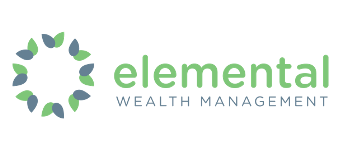Whether you need funds to get a new enterprise off the ground or are looking for capital to take things to the next level, it’s important to understand if a business loan is right for you, what types of business loans are available, and what’s involved in the application process.

Step 1: Explore the alternatives
Before you decide that a business loan is a right option, it’s worth considering any other funding sources available to your business.
Some lenders – especially the big banks – offer business-specific credit cards that can be used to manage cash flow, control spending and earn rewards on business purchases.
Perhaps there’s a government grant or funding program available to your industry – especially if you’re doing work related to research and development, innovation or exporting.
Or there may be people out there looking to invest in a business just like yours. Just remember, investors will be looking for equity and profit-sharing in return.
“Many lenders offer both secured and unsecured loans. Each type comes with benefits and important things to consider, so make sure you understand the differences before you apply.”
Lastly, you may be able to tap into what’s known as “crowdfunding” to raise funds for a business or project. You can set up a crowdfunding page online, and offer equity in return for large investments, or exclusive products, services or other rewards for smaller investments.
Step 2: Understand the types of business loans available
If you’re looking to manage your cash flow in the short term, an overdraft or line of credit might be right for you. These types of loans give you access to money when you need to cover a shortfall due to unexpected expenses or late payments from clients or customers.
Overdrafts are linked to an existing business bank account, while lines of credit allow you to access funding from a preset pool of money. These types of loans are designed to cover short term expenses, not used for capital purchases or long-term business needs.
Upfront loans provide the entire loan amount all at once and are designed for those looking to buy a new business or expand an existing business, buy stock, assets or business property, or have a source of available working capital. Like residential property loans, they vary in the amounts available, repayment terms, fixed or variable interest rates, fees and security required.
Variable-rate loans are subject to changes in interest rates, which means your business could benefit from rate cuts, or pay more when rates rise. With fixed-rate loans, you’ll know what is due every time you make a repayment, and will avoid paying more when rates rise – or miss out on savings when rates are cut. Fixed rates vary depending on the length of time of the fixed-rate period.
Many lenders offer both secured and unsecured loans, too. Each type comes with benefits and important things to consider, so make sure you understand the differences before you apply.
With a secured loan, your ability to repay is ‘secured’ by a major asset – like real estate, equipment or vehicles, or your accounts receivable. If you’re unable to pay the loan back, that asset will become the property of your lender. Secured loans usually come with lower interest rates, longer terms and higher loan amounts available – and are best for established businesses with strong credit histories.
Unsecured loans don’t require an asset to be placed as collateral, but the trade-off comes in the form of lower amounts available to borrow, significantly higher interest rates, and much shorter terms of repayment. While the application process for these types of loans is often quicker than with secured business loans, it’s often more difficult to be approved due to the lack of collateral.
The other most common type of business loan is designed for the purchasing of equipment or vehicles. While these can also be purchased through lease-to-buy arrangements, buying means owning important assets for your business in one step. And an equipment or vehicle loan is perfect for those businesses without the cash flow available to buy outright, right now.
Business vehicle and equipment financing loans are typically fixed-rate and don’t require any security except for the vehicle or equipment itself.
Step 3: Make sure you’re set up for success
As with residential property loans, different lenders use different rules and criteria to assess a borrower’s eligibility. But there are a few things that are important to have ready when you put in an application.
You’ll most likely need to provide financial statements that outline assets and liabilities, and the net worth of your business, as well as detailing income and expenses. And it’s recommended you have these put together by an accountant. You may need to provide recent tax returns and business activity (BAS) statements, too.
If you’re the director or a shareholder in the business, most lenders will want to see your recent tax returns and an Australian Tax Office notice of assessment. Information regarding income you receive from outside the business can aid in your application, too. You’ll also need bank statements to verify personal income, as well as sources of identification – like a driver’s license or passport.
Remember, if you’re applying for a loan to start a new business or if you’ve been trading for less than a year, there are a few extra things you may need to provide. You’ll need a business plan that includes at least 12 months of cash flow projections, a business contract of sale, and a lease agreement for the place your business calls (or will call) home.
Ready to roll? To begin your application for a business loan, speak to a qualified mortgage broker today.
Please contact us on (07) 5494 0650 if you seek further discussion on this topic.
Source : Your Loan Hub October 2020
(C) Advantedge Financial Services Holdings Pty Ltd ABN 57 095 300 502. This article provides general information only and may not reflect the publisher’s opinion. None of the authors, the publisher or their employees are liable for any inaccuracies, errors or omissions in the publication or any change to information in the publication. This publication or any part of it may be reproduced only with the publisher’s prior permission. It was prepared without taking into account your objectives, financial situation or needs. Please consult your financial adviser, broker or accountant before acting on information in this publication.
Important: Any links have been provided with permission for information purposes only and will take you to external websites, which are not connected to our company in any way. Note: Our company does not endorse and is not responsible for the accuracy of the contents/information contained within the linked site(s) accessible from this page
